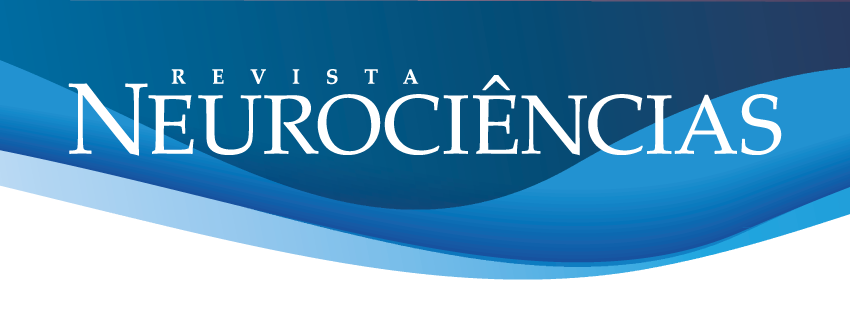The benefits of equotherapy in the equilibrium of a patient with sequels of stroke
DOI:
https://doi.org/10.34024/rnc.2019.v27.9604Keywords:
rehabilitation, physiotherapy, strokeAbstract
Objective. To evaluate the benefits of hippotherapy on the balance of a patient with stroke sequelae. Method. The research was characterized by a prospective, qualitative and quantitative, exploratory descriptive longitudinal case study. Three evaluations were used as the method: pre-assessment, based on data from the Berg Balance Scale at CEEASA, at the end of 30 consultations in 2017. After this, the subject had a period of 3 months without consultations. In March 2018, the initial evaluation was performed at the Unicruz Equine Therapy Center - CEU, and the final evaluation, after 10 equine therapy visits, once a week, lasting 30 minutes. Data were analyzed using appropriate statistical package. Results. It was found that the practitioner's balance after therapy achieved a gain of 7 points on the full scale (48-55). Conclusion. Equine therapy was a complementary and continuous treatment, because without it the practitioner regresses in their skills.
Metrics
References
Silva Filho EM, Albuquerque JA. Influência da terapia de restrição e indução do movimento no desempenho funcional de pacientes com acidente vascular encefálico: um ensaio clínico randomizado. Fisioter Pesqui 2017;24:180-90. http://dx.doi.org/10.1590/1809-2950/16874424022017
Beinotti F, Correia N, Christofoletti G, Borges G. Use of hippotherapy in gait training for hemiparetic post-stroke. Arq Neuropsiquiatr 2010;68:908-13.
http://dx.doi.org/10.1590/S0004-282X2010000600015
Lee CW, Kim SG, Yong MS. Effects of hippotherapy on recovery of gait and balance ability in patients with stroke. J Phys Ther Sci 2014;26:309-11. http://dx.doi.org/10.1589/jpts.26.309
Pedebos BM, Porto LB, Copetti F, Balk RS. Avaliação do controle postural e sua relação com o hemisfério acometido em pacientes com acidente vascular cerebral praticando equoterapia. Fisioter Bras 2014;15:22-8. http://www.portalatlanticaeditora.com.br/index.php/fisioterapiabrasil/article/view/308/532
Ghotbi N, Nakhostin Ansari N, Naghdi S, Hasson S. Measurement of lower-limb muscle spasticity: intrarater reliability of modified modified ashworth scale. J Rehabil Res Dev 2011;48:83-8. http://dx.doi.org/10.1682/jrrd.2010.02.0020
Bunketorp-Käll L, Lundgren-Nilsson Å, Samuelsson H, Pekny T, Blomvé K, Pekna M, et al. Long-term improvements after multimodal rehabilitation in late phase after stroke a randomized controlled trial. Stroke 2017;48:1916-24.
http://dx.doi.org/10.1161/STROKEAHA.116.016433
Costa LPD. A equoterapia como forma de inclusão social para o portador de necessidades especiais. In: Adams A, Brutti TA, Peranzoni VC (Orgs). Inclusão social e preconceitos na contemporaneidade - Volume II. Curitiba: Editora CRV, 2016.
Moraes AG, Copetti F, Ângelo VR, Chiavoloni L, de David AC. Hippotherapy on postural balance in the sitting position of children with cerebral palsy – Longitudinal study. Physiother Theory Pract 2018,11:1-8. https://doi.org/10.1080/09593985.2018.1484534
Chung EJ, Kim JH, Lee BH. The Effects of Core Stabilization Exercise on Dynamic Balance and Gait Function in Stroke Patients. J Phys Ther Sci 2013;25:803-6. https://doi.org/10.1589/jpts.25.803
Han JY, Kim JM, Kim SK, Chung JS, Lee HC, Lim JK, et al. Therapeutic effects of mechanical horseback riding on gait and balance ability in stroke patients. Ann Rehabil Med 2012;36:762-9. https://doi.org/10.5535/arm.2012.36.6.762
Maćków A, Małachowska-Sobieska M, Demczuk-Włodarczyk E, Sidorowska M, Szklarska A, Lipowicz A. Influence of neurophysiological hippotherapy on the transference of the centre of gravity among children with cerebral palsy. Ortop Traumatol Rehabil 2014;16:581-93. https://doi.org/10.5604/15093492.1135048
Bondia JP, Ferreira RCC, Muniz GMM. Equoterapia no controle postural em pacientes com hemiparesia espástica após AVE. Fisioterapia Brasil 2014;15:1-8.
http://porteiras.s.unipampa.edu.br/gpfin/files/2014/06/artigo-4-Fisioterapia-Brasil- v15n1-Rodrigo-de-Souza-Balk.pdf
Hess D, Nishiwaki J, Liberatori MF, Eichinger FLF, Soares AV. Modalidades de tratamento da espasticidade. Cad Educ Saúde Fisioter 2017;4:46-56. https://doi.org/10.18310/2358-8306.v4n7.p46
Downloads
Published
How to Cite
Issue
Section
##plugins.generic.dates.accepted## 2019-12-04
##plugins.generic.dates.published## 2019-12-26


 Português
Português
 English
English
 Español
Español
